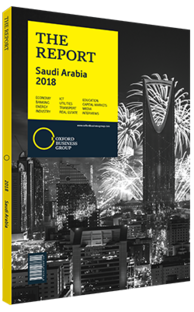Compulsory coverage boosts health insurance segment in Saudi Arabia
Health cover accounts for around half of the Saudi insurance market, with gross written premiums (GWPs) from this segment worth SR18.65bn ($5bn) in 2016. The health line of business has benefitted enormously in recent times from the expansion of the Kingdom’s medical services, as well as the introduction of statutory requirements for health insurance. These have been rolled out in a phased manner over the last handful of years, with 2017 seeing the final stage of this process.
Line Size
According to “The Saudi Insurance Market Report 2016” by the regulator, the Saudi Arabian Monetary Authority (SAMA), when compulsory and non-compulsory lines were combined, health insurance accounted for 51% of GWPs and 59% of net written premiums. This resulted in the highest retention ratio of any line of business in the sector at 97.1%, with the loss ratio coming in at 78%. While there are 27 insurers offering health cover, three dominate the segment – Tawuniya, BUPA and Medgulf. According to a report by Arabian Shield Insurance, health accounted for 65% of Tawuniya’s GWPs in 2016, 100% at BUPA and 71% at Medgulf. Three smaller companies have over 50% of their GWPs in this line of business as well – Solidarity, Metlife and Enaya. The larger companies have been able to benefit from economies of scale, providing them with a good negotiating position to obtain discounted rates from hospitals. As strong international reputation is also key – a particular benefit to a company such as BUPA, with its 100% medical focus. Thus, these firms have benefitted the most from recent changes in health legislation that have made related insurance compulsory for a succession of different groups.
Health Act
The Cooperative Health Insurance Act was passed in 1999 with the aim of extending health insurance coverage to the entire Saudi and expatriate population. Implementation of the act was made the responsibility of the Council of Cooperative Health Insurance (CCHI). The council began by making it compulsory for non-Saudis working in the country – along with their families residing here – to obtain private health insurance from a CCHI-approved company.
This requirement was extended in December 2015, pulling in non-Saudis visiting the Kingdom. Travellers obtain health cover as part of the visa application process, though diplomatic personnel and those visiting for religious pilgrimages are exempt. The next step, which began in July 2016, included all Saudi nationals and their families working in the private sector under the compulsory health insurance scheme. By spring 2017 all private sector companies had been covered. Figures from the Ministry of Labour indicate that this final phase raised the number of covered individuals by 6m. According to the CCHI, the number of people with health insurance in mid-2017 was 12m, with 2.5m of these Saudis and 9.5m non-Saudis.
With the compulsory requirements reaching their goal, health insurers have seen a declining rate of growth. The SR18.65bn ($5bn) in GWPs recorded for 2016 was down 1.8% on the SR18.97bn ($5.05bn) recorded in 2015 – a figure that was up 20.7% over 2014. From 2012 to 2013 health GWPs rose by 14.3%, then by 22% from 2013 to 2014. The slowdown in 2016 represents a major change for those companies and major exposure in a highly competitive segment.
Network
As is common with other market segments, health insurance is also seeing heightened regulatory enforcement. The CCHI is the main health-dedicated regulator, although the General Department of Insurance Control SAMA has responsibilities over insurers in general. In June 2017 the CCHI announced that as of August 11, 2017 it would be enforcing a requirement for companies that offer this type of cover to have a minimum network of health providers around the Kingdom. This is likely to have more of an impact on smaller companies, as larger entities are usually able to offer wider geographical coverage. The year ahead should therefore see further changes in the segment, with general market health getting a thorough check-up.
You have reached the limit of premium articles you can view for free.
Choose from the options below to purchase print or digital editions of our Reports. You can also purchase a website subscription giving you unlimited access to all of our Reports online for 12 months.
If you have already purchased this Report or have a website subscription, please login to continue.

